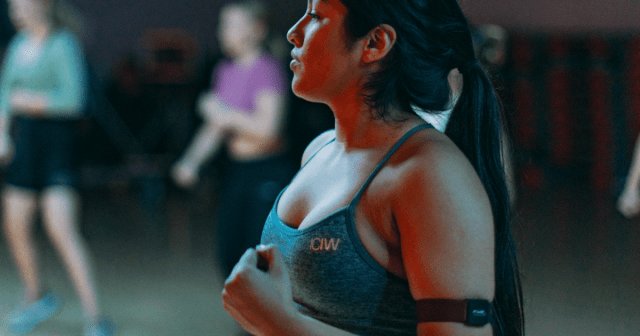Don’t get us wrong — strength training is an important part of any fitness routine. Besides the obvious benefits like getting stronger and fitter, strength training also protects muscle and bone mass and is a proven way to lose weight.
With all the positives associated with strength training, why then are we suggesting you should incorporate something other than lifting weights or resistance training into your weekly routine?
We caught up with Fatima Witick, a fitness instructor and dance teacher from Helsinki, Finland, with over 34 years of experience in the fitness industry. She has taught classical ballet, yoga, Pilates and other workout classes and has helped thousands of students throughout her career.
A FUNCTIONAL BODY NEEDS STRENGTH AND SPACE
Long story short, she argues for a well-rounded approach to strength and power, supplemented by space in the body (aka flexibility) to counter the negative effects of today’s more sedentary lifestyle.
Without functional muscles the body will not move in an optimal way.
“In its simplest form, strength and power is vital for a functional body because muscles move the bones and joints, so without functional muscles the body will not move in an optimal way,” says Witick.
“Weak muscles will cause the body to rapidly deteriorate, and it will function badly. A non-functional body causes pain — you need power to maintain a healthy body.”
Strength and power can be fostered through a variety of outlets, including at-home bodyweight workouts, sets at the gym, machine-based workouts, free weight exercises, workout classes, etc.
Variation is key when it comes to strength workouts to prevent stagnation and overuse injuries.
Variation is key when it comes to strength workouts to prevent stagnation and overuse injuries. The right balance of strength workouts (strength, maximum power, speed, etc.) creates a well-rounded strength routine.
MUSCLES THAT LOOK GOOD OR STRENGTH YOU CAN USE?
As with most things in life, too much of a good thing can be bad — especially if you’re using strength exercises for the wrong reasons.
“In my opinion, it’s unhealthy if you focus too much of size and looks of muscles, instead of the function of muscles. Many men train at the gym but train just a few muscle groups, and they get shoulder injuries and lower back pain, also knee problems,” says Witick.
“Women tend to only look at what their muscles look like, not if they function. So it is the same as for men, you get shoulder, back and knee pain.”
Witick describes a healthy body as one with correct posture and symmetry, where the left and the right sides of the body are equal.
This is where space and flexibility enter the picture. Witick describes a healthy body as one with correct posture and symmetry, where the left and the right sides of the body are equal. As mentioned, too much strength and power training can throw this equilibrium off.
To compound the issue, today’s deskbound culture is another big cause of imbalances of the body.
“Why are people today so unfit?” asks Witick. “Too much sitting, too much time hunched over laptops and smartphones, too little movement during the day. Kids don’t play enough and adults sit too much with bad posture. Life has become too easy — we don’t need to get up as often as 10 or 20 years ago.”
TECHNIQUE IS KEY IN ALL EXERCISES
So how can someone who is tied to a desk all day or has created muscular imbalances from strength training create a healthier fitness profile?
You need to focus on posture, symmetry and range of motion in all types of training.
According to Witick, you always need to focus on posture, symmetry and range of motion in all types of training, no matter if you’re practicing yoga or trail running.
“All kinds of exercises are healthy and functional when you are using good technique,” Witick says. “Also you need power into all body parts — from toes, all the way up. All movements need to be balanced by countermovement to create balance.”
“And then you need rest. Make a habit of a good night’s sleep every day and allow rest days from the training itself. And of course, proper nutrition and hydration,” Witick says.
At the end of the day, Witick argues it’s still healthier to be strong and stiff than to be weak and too loose in the joints.
Is it better to be strong or flexible?
At the end of the day, Witick argues it’s still healthier to be strong and stiff than to be weak and too loose in the joints. But naturally, the right balance between strength and space in the body is optimal for longevity.
Everyone is different — finding the right workout regimen for you through expert coaching can promote this.
“The healthiest people are those who have strength with space in the body, so you are flexible and you have the power to use that flexibility, and you have a large range of motion, posture and symmetry,” says Witick.
To learn more about how to get more functional strength and space into your body, follow Fatima on Instagram where she posts new movements daily.
If you liked this post, don’t forget to share so that others can find it, too.
Please note that the information provided in the Polar Blog articles cannot replace individual advice from health professionals. Please consult your physician before starting a new fitness program.






